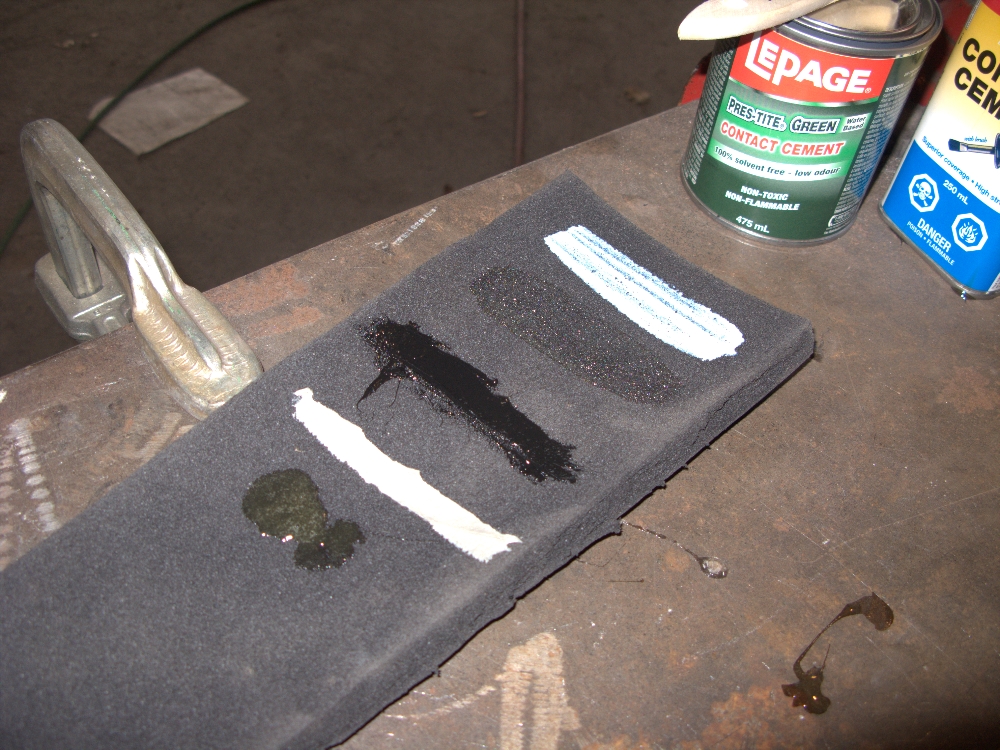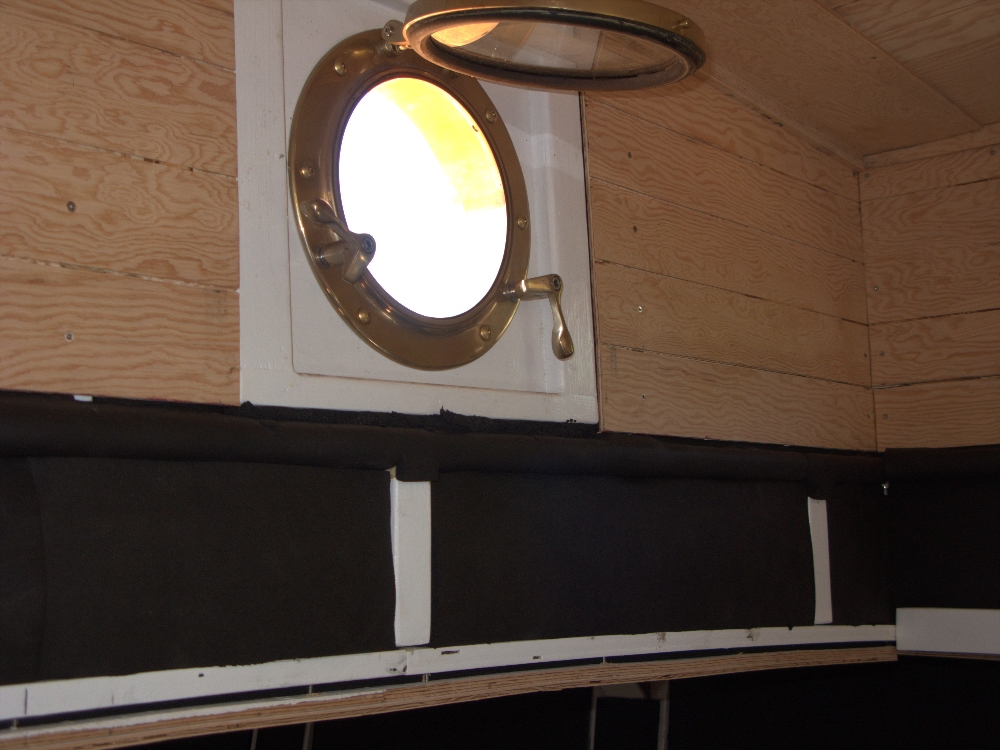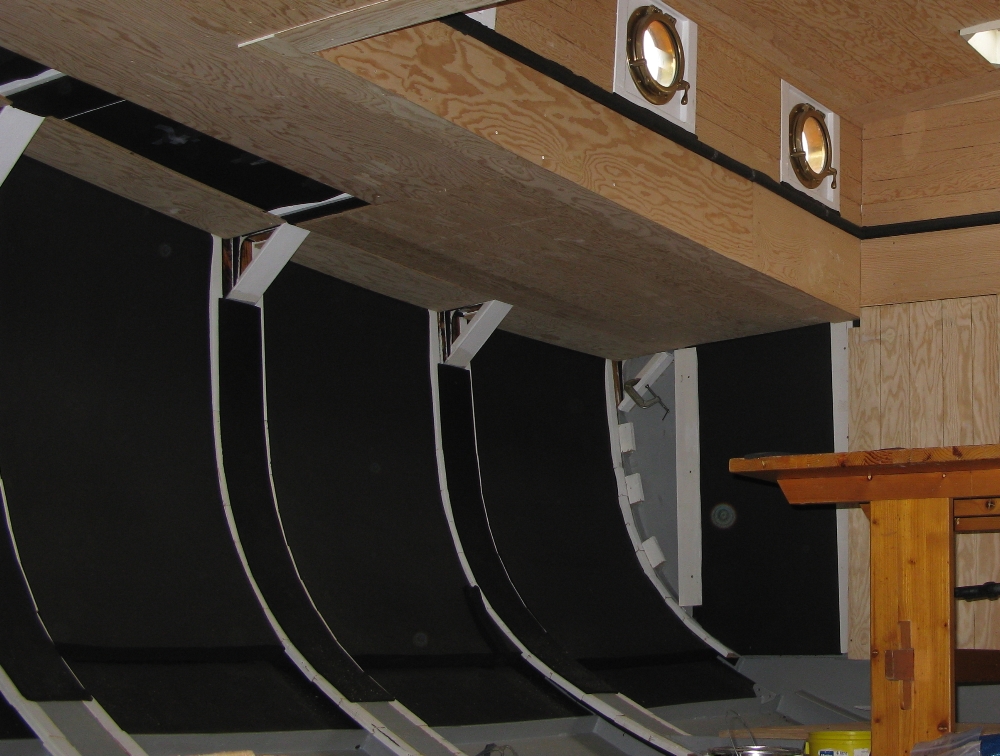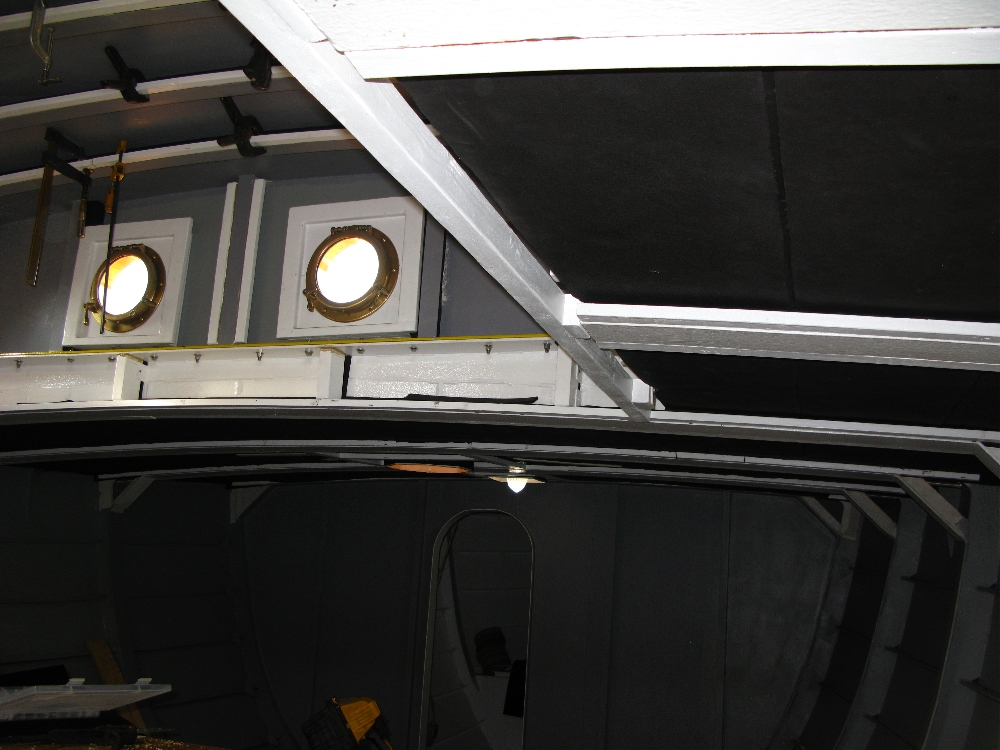Why insulate
Insulation is particularly important in a metal boat, even if the boat will not sail in cold climate. We insulate metal boats to limit condensation. The interior of the boat tending to be warmer then the steel (as it is cooled by the water) condensation will tend to form on the steel, like on a cold glass. By insulating the hull we don’t allow hot air to contact the cold steel surface. With the same purpose in mind, a good insulation method will also form a vapor barrier.
We also insulate for comfort. Metals being good conductors, metal boats tend to get very hot in the heat and very cold in the cold.
According to armacell’s information sheet, for a proper condensation barrier, most sever conditions (-18C hull temperature / 32C interior / 80% RH) require 2″ of armaflex. Yes, I agree this is for pretty extreme conditions but believe it or not we have experienced it. The boat frozen hard in the ice, minus thirty outside, the wind howling but more than toasty in the boat…warm memories…but back to my insulation… For condensation alone we are bond to 2″ of insulation. Our rib depth is 4″ on the hull, 3″ under the deck. We want our lining to press against the insulation, no air gap; the reason is simply to eliminate void spaces which could accommodate unwanted creatures, hence bugs and vermin. We considered boxing in our frames to reduce the lost space and amount of insulation needed to fill the gap but realized that the gain was minimal for the increased labor. In fact, with wintering in cold climates in mind, 4 in of insulation is not as crazy as it may sound (yet way overboard for most boats) and would be at our advantage.
Insulation choice: Armacell/ Armaflex
Since we live in Canada and have not smarten up yet quite enough to contemplate running away from winter, we are also insulating her with very cold temperatures in mind.
We have spent much time researching, weighing and debating pro’s and cons of different insulation materials. Because we need a substantial “R” value and don’t consider appropriate any home renovation materials, it came down to either spray polyurethane foam or Armacell.
We seriously considered the spray polyurethane foam as it does have its advantages but those have not made the cut over our apprehensions. The foam is a fast way to insulate, provides a great vapour barrier, it shapes nicely to the hull…..but, if something goes wrong you can end up with quite the mess. I did my research and most kits available were for landlubbers applications and didn’t provide a closed cell density, or simply didn’t provide any data at all. For kits which were appropriate for marine environment, there was some serious warning about the importance of spraying in well controlled, stable temperature environment. From what I gather the properties of the material can be greatly altered by inappropriate application. I have heard of great reviews from people who’s boat are insulated with PU foam but for each happy experience I have heard of a not so good other case.
At the end what completely made us lean away from PU foam is the fact that it is not accepted for commercial vessels. We are trying, as much as possible, to build the Mimi Jane in accordance to regulations in order to keep a possibility to charter. I understand that the reason for polyurethane insulation being banned from commercial vessel is it flammability and the nasty gas produced when it burns. Armacell is something else to ignite. Out of curiosity Mark and I did the test. We took a piece of insulation foam off a friends boat and a sample of armacell and did a burn test. Armacell did not burn, we tried a few times but the flame would always self extinguish. The PU disappeared in smoke.
So what is armacell. It is a black flexible synthetic rubber based foam, or, easier to picture, a neoprene like rubber insulation. It comes in many thicknesses from 1/8th of an inch to 2inch. It comes in either rolls of 48 inch wide or sheets 36inch by 48 in. The sheets size suited perfectly our needs and made it for easier handling than rolls, so that’s what we opted for. The insulation gets glued directly to the hull. To do so there are two options, either use sticky back adherent armacell sheets or contact cement. We purchased 1/4 inch sticky back sheets and for the rest of our insulation needs we used armacell’s BVC520 low VOC contact cement. Prior to obtaining a descent price for armacell’s glue we experimented with a variety of adhesives: regular contact cement, water based contact cement and divers polyurethane adhesives. I’m not going to elaborate on our results but just say that non of the adhesives we tried damaged the armacell but non was worth the hassle compared to the benefits of using the glue meant for the job, BVC520. The armacell adhesive is quite good, it’s used like any other contact cement (and stinks just as much, yet smell disappears fast after curing). It can be used in temperatures as low as 4C, which has been handy for me since I worked late in the fall on insulating my living quarters. I found that the timing, wait for surfaces to dry vs open window to contact surfaces together, was perfect for non interrupted work, which is not always the case with contact cements. Cherry on the cake: it was about the same price as the cheap hardware store contact cements.

The insulation material on the other side is not cheap.
I believe the price of Armacell is probably what drives most people away. The unfortunate truth of the matter is that the prices can vary a lot depending on ones shopping talent. We were buying a fair amount of insulation and it made it worth while for me to invest some energy into shopping. To give you an idea of the variances in quotes, for a sample amount, given prices varied from 4000$ to 16000$. It would be irrelevant to try to give a unit price for armacel material as prices vary substantially depending on the products used,( thickness, roll or sheet, stickyback), with oil prices, as well as where you are buying from. The variances were such I actually went as crazy as making multiple pages of spreadsheets to outlay options and cost analysis…ok its crazy, but I’m slightly geeky and have fun with spreadsheets. The most frustrating part of my armacell shopping experience was to find out that the distributors in Canada had a bit of a monopoly allowing them to ridiculously inflate there prices. We ended up importing insulation from a US distributor located 900miles away for 30% cheaper (including shipping and duties) than buying it from local guy. It was worth shopping for. I haven’t seriously priced out PU foam so I can’t make a rock hard statement on the cost difference between both insulation methods. I believe using Armacell might have cost us about twice the money compared to spraying. No secret shame, no arguing the fact: Armacell is more expensive than spraying. Saying that the incremental cost over the whole project was worth, to us, using the material we believed was practically our best option.

Working with Armacell
Armacell is generally easy to work with; it’s a stinky job but its not noisy. It is easy to cut with a knife as long as you have sharp blades. The catch is catch is the blades get dull very fast. Accepting I would go through a lot of blades, it was just the matter of changing them as needed.
I got into a nice rythme of cutting and fitting one peice, spreading the contact cement on the insulation and the steel surface, letting it sit while I would be preparing the next peice and getting back to the final placemet of the ready to fit insulation. As with anything being glued with contact cement, you dont have a second chance, when both glued surfeces tough, its there to stay.
We used some 3×4 feet sheets of insulation in three different thicknesses: 1 1/2 inch, 2 inch and 1/4 inch (with sticky back)
The sides of the hull were insulated with 2 layers of 2 inch , under the deck with 2 layers of 1 1/2 inch insulation and all the ribs flanges were covered with 1/4 sticky back material.

One issue with Armacell
The material is not dimensionally stable. The dimensions of a 3×4 feet of armacell would vary by as much as an inch with temperature variances. I insulated the boat in the summer when it was warm and the insulation material was at its expanded dimensions. When it cooled off in the fall, there were some fair gaps between each sheet. Since I had not yet fitted the finishing paneling, I was able to fill the gaps with bands of armacell. It has also not been a big worry as our insulation is made of 2 layers of material with staggered seams.
Doing it again I would have compressed the material a little more so it would not form gaps in colder temperatures. I wish that had been clear somewhere in the materials specifications.

A word on purchasing armacell
My Armaflex shopping has been a whole venture of it’s own…not quite strait forward. Armacell’s market target is obviously more into the big industry than nagging young women. I am actually not that bad of client (don’t like back and forth dealing games), but I’ve hit some sales practice which are not quite my piece of cake. Lets just put it like this, quotes have range from $15000 (no wonder some people get the idea it’s outrageously expensive) down to $4000 for the same job. If a distributor doesn’t want my business, that is fine by me but they can just say so, not waste my time. Anyway, I finally found shoe that fits my foot and placed my order for Armaflex AP. I found a dealer in the US which has been a charm to deal with.
It was a quest alright, but I finally got my truck load of insulation. Maybe I’ll come around to writing the whole story. In brief the local distributors being such a rip off I did get my insulation from a distributor over 1200km away from here. Unfortunately, shipping (or more exactly reception) ended up not being as strait forward as it should have been and our pricey load was temporary lost (by UPS)….. I discovered myself some surprising Columbo skills and found my insulation within reasonable time. Circumstances leading to the shipment being lost were ridiculous, I’m still shaking my head.

